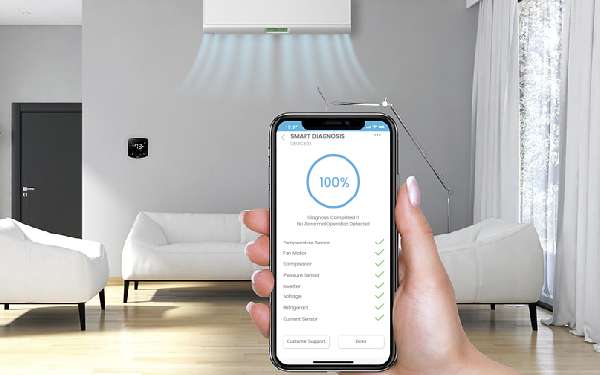In recent years, the role of predictive failure detection in VRF systems has become increasingly significant in maintaining the efficiency and reliability of HVAC systems. As VRF (Variable Refrigerant Flow) systems gain popularity for their energy efficiency and flexibility, the need for advanced maintenance strategies becomes crucial. By understanding and implementing predictive failure detection, businesses and homeowners can ensure their systems operate smoothly, avoiding unexpected downtimes.

What is Predictive Failure Detection?
Predictive failure detection involves using advanced technologies to monitor the health and performance of systems in real-time. This approach allows for the early identification of potential failures, enabling timely interventions before minor issues escalate into major problems. By leveraging data analytics and AI, predictive failure detection provides insights that traditional maintenance methods often miss.
The Importance of VRF Systems
VRF systems are a type of HVAC system known for their ability to provide precise temperature control in different zones of a building. They are energy-efficient and offer flexibility in installation, making them a preferred choice for both commercial and residential applications. With the growing adoption of VRF systems, ensuring their reliability through predictive maintenance is crucial.
How Predictive Failure Detection Works in VRF Systems
Predictive failure detection in VRF systems utilizes sensors and software to constantly monitor various parameters such as temperature, pressure, and electrical characteristics. These data points are analyzed in real-time to detect anomalies and predict potential failures. This proactive approach helps in minimizing system downtime and extending the lifespan of the equipment.
Key Components of Predictive Maintenance
- Sensors: These devices collect data on system performance and environmental conditions.
- Data Analytics: Advanced algorithms analyze the collected data to identify patterns and predict failures.
- AI Technology: Artificial Intelligence enhances the accuracy of predictions by learning from historical data.
Benefits of Implementing Predictive Failure Detection
Adopting predictive failure detection in VRF systems offers numerous benefits:
- Reduced Downtime: Early detection of potential issues prevents unexpected system failures.
- Cost Savings: Proactive maintenance reduces repair costs and extends equipment life.
- Improved Efficiency: Systems operate at optimal performance, enhancing energy efficiency.
Case Study: Successful Implementation
A renowned commercial building implemented predictive failure detection in their VRF systems, resulting in a 30% reduction in maintenance costs and a significant decrease in system downtime. The system’s ability to predict failures allowed for timely interventions, ensuring continuous comfort for occupants.
Technological Advancements Driving Predictive Detection
The integration of AI and IoT technologies has revolutionized predictive failure detection. With AI, systems can learn from vast datasets, improving the accuracy of failure predictions. The Internet of Things (IoT) enables seamless connectivity between devices, facilitating real-time monitoring and data exchange.
AI and Data Analytics
AI-powered systems analyze data with precision, identifying subtle patterns that may indicate impending failures. This capability allows for more accurate predictions and timely maintenance actions.
Challenges and Considerations
While predictive failure detection offers numerous advantages, there are challenges to consider:
- Data Privacy: Ensuring data security and privacy is crucial when implementing IoT-enabled systems.
- Initial Costs: The initial investment in sensors and software can be substantial, although long-term savings justify the expense.
It’s important to weigh these factors against the potential benefits when considering predictive failure detection for VRF systems.
Future of Predictive Maintenance in VRF Systems
The future looks promising for predictive maintenance in VRF systems. As technology continues to evolve, predictive models will become more sophisticated, offering even greater accuracy and reliability. Businesses and homeowners can look forward to more efficient and resilient HVAC systems.
Conclusion
Incorporating predictive failure detection into VRF systems is a strategic move towards enhancing system reliability and efficiency. By embracing advanced technologies, users can enjoy the benefits of reduced downtime, cost savings, and improved performance. As the HVAC industry evolves, predictive maintenance will play a pivotal role in shaping the future of building comfort and efficiency.

FAQ
How does predictive failure detection differ from traditional maintenance?
Predictive failure detection focuses on real-time monitoring and data analysis to anticipate failures, while traditional maintenance is often reactive, addressing issues after they occur.
Is predictive failure detection suitable for all types of HVAC systems?
While particularly beneficial for complex systems like VRF, predictive failure detection can be adapted to various HVAC setups, enhancing their reliability and efficiency.
What is the role of AI in predictive failure detection?
AI plays a crucial role by analyzing data to identify patterns and predict failures, significantly improving the accuracy of maintenance strategies.
For more insights on innovative HVAC solutions, visit Predictive Fault Management in HVAC or explore HVAC Innovations with AI.
This article contains affiliate links. We may earn a commission at no extra cost to you.
